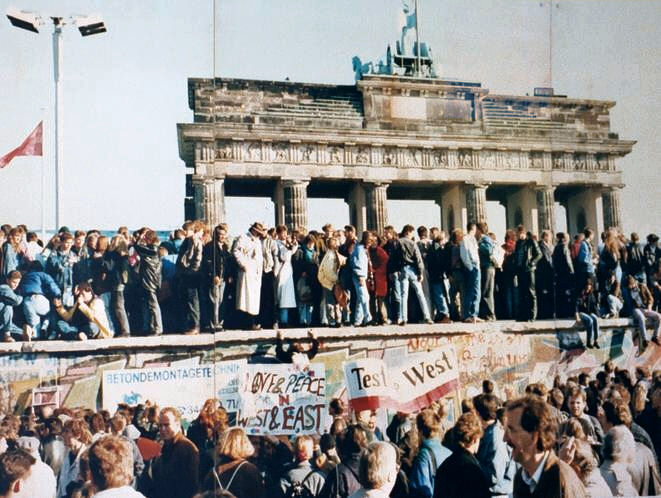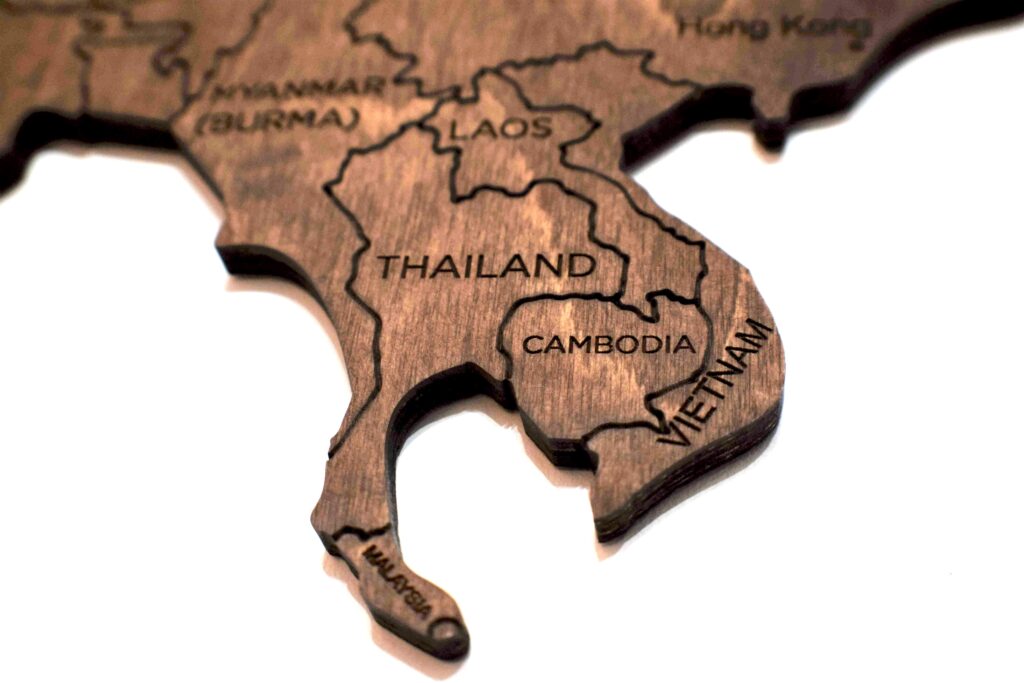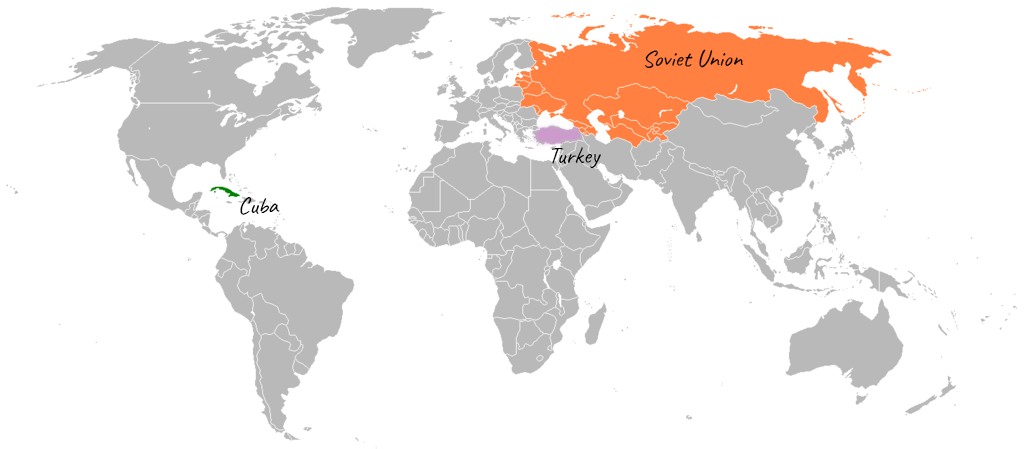What is Cold War?
The cold war is the term coined by Bernard Baruch, popularised by Walter Lippmann with his book titled “Cold War”. It is a new term introduced in international politics to explain the nature of relations between the USA and USSR since the end of world war II in 1945.
In 1989, at the Malta summit, the president of the USA and USSR declared the cold war to be over.
The relation between the USA and USSR was hostile to such a limit that it was termed a war. It denotes an extremely high level of distrust, antagonism, hostilities that are normally present during a war.
All the conditions were present, yet it does not result in a direct hot war. It is said that if some conditions have not been present, it would have converted into a full-fledged war.
Nuclear weapons insured that the cold war did not turn hot. The two superpowers maintained the balance of terror. Therefore, some consider nuclear weapons as the ultimate weapons of peace.
But the two superpowers did reach the stage of direct confrontation during the Cuban missile crisis. Also, many proxy wars were affecting third world countries.
Was Cold War ideological battle or geopolitical conflict?
Geopolitics has always been a core concern of Russia’s foreign policy. Whether Lenin, Stalin, or Putin, all have been concerned about the vulnerability of Russia because of its open borders. It was for this reason Russia always wanted to create buffer states around its periphery. So from the perspective of the USSR, geopolitics dominates.

The USA never understood the security concerns of Russia. From the USA’s point of view, the ideology of communism presented a threat to capitalism. But the cold war was inevitable because the two countries represented two different world views. One was having capitalism, and the other was based on the destruction of capitalism.
TIMELINE of the cold war
1917 – Communist revolution in Russia. The USA tried to support the reactionary elements.
Lenin’s Foreign Policy – Lenin felt that communism in USSR was not secured if it was surrounded by hostile, capitalist states. In 1919, he formed the communist international for the export of communism.
Stalin’s Foreign Policy – His policy was more guided by geopolitics than ideology. He did not want ideological confrontation with the west. Hence, he declared his aim as “Socialism in one country”. But Stalin failed to convince the west. After this, Stalin started consolidating USSR’s position.
Stalin’s foreign policy came to be known as “Salami Tactics”. It implied one by one, taking in peripheral regions into Russia. It was a way of enlarging the USSR as well as establishing communism around.
Stalin was so much concerned about the security of the USSR, that he entered into a “non-aggression” pact with Hitler in 1939. This pact convinced western countries that the two totalitarian regimes have a common aim to destroy democracy. But Russia had to intervene in world war II alongside western countries only after Hitler started operating against it. Russia’s alliance with the western countries was temporary against the common enemy.
Developments during world war II led to further distrust between USSR and the USA. The USA informed Britain and Canada about the nuclear bombs (its Manhattan Project) but did not inform Stalin. Moreover, wartime conferences made it clear that the two countries have a difference of opinion over future architecture in Europe.
With the decision to end world war II using atom bombs by the USA, Stalin felt that the real purpose to use nuclear weapons was to deter Russia from expanding communism. It generated further suspicion.
Nuclear Displacement Plan
The USA proposed nuclear disarmament – Baruch Plan (1946) – According to it, all countries will transfer their nuclear materials to United Nations. Also, all will suspend plans to develop nuclear weapons. After this USA will dismantle its stockpile.
Russia’s Plan – Gromyko Plan (1946) – According to it, first USA to dismantle its nuclear weapons, and then Russia will transfer.
Nuclear displacement remained a missed opportunity because of the lack of trust. Instead of disarmament, they entered into a nuclear arms race to achieve strategic balance. The nuclear arms race is the most defining feature of the cold war.
To ensure the cold war remained cold, it was necessary to ensure the balance of terror.
Phases of Cold War
PHASE 1 (1945 – 1969)
USSR acquired nuclear weapons in 1949.
The long telegram was sent by Mr. X
Mr. X was George Kennan, who was US ambassador to Russia. He has communicated that Russia views itself at permanent war with capitalism and is committed to root out capitalism. Hence, the US should be firm and vigilant with respect to Russian containment. Thus, he was the inventor of the USA’s policy towards Russia during the cold war i.e. containment policy.
Truman Doctrine (March 1947)
Truman demanded $400 million from the US congress as emergency assistance to stop Greece and Turkey from falling to communism. It led to the proclamation of Truman’s doctrine that marks the end of the Munroe doctrine (policy of isolation). According to the Truman doctrine, the USA is committed to assist people aspiring for freedom and to work out their destinies in their own way.
Marshall Plan
It was an economic component of containment, also known as the European recovery plan. US Congress sanctioned $13 billion for the reconstruction of devastated nations.
Russian response
Stalin formed Cominform for supporting communist guerrillas and communist parties to counter containment policies. Molotov Plan came into existence to stop east European countries from taking aid under Marshall Plan.
Berlin Blockade (1948-1949)
It was the first direct confrontation between the two superpowers. It was the decisive victory for the west. After this, the cold war shifted to the third world.
In 1949, the USA formed NATO to assure the security of its European allies. Germany was partitioned into east and west. West Germany started flourishing, and the east remained poor. To stop the flow of people from east to west, the Berlin wall was constructed overnight in 1961, symbolizing the concrete iron curtain and division of Europe into two blocs.

In 1955 USSR formed WARSAW Pact comprising of east European states. The immediate context was the decision of the west to incorporate west Germany in NATO.
Cold War in Asia
The victory of communism in China
The group supported by the USA, led by Chiang Kai Shek (Kuomintang party), had to be relocated to Taiwan. Taiwan became the republic of Taiwan and a democratic country.
Korean crisis (1950-1953)
[Long time back it was controlled by Japan]. The first incidence in Asia where containment policy was applied. The USA intervened militarily. But the US only got partial success. It was able to roll back communism from South Korea but not from North Korea. It was because of China and Russia.
Korean peninsula remained divided and is a highly militarized zone and can be a threat to world peace.
Vietnam war (1955-1975)
It continued for 20 years. In the Vietnam war, the USA’s containment policy was based on the theory of the domino effect. It suggested that if one country falls to communism, others will also follow. Hence, a stronger form of containment was required to protect the USA’s interest in the Asia Pacific. Domino theory became the basis of the Eisenhower Doctrine.

Vietnam was a definite defeat of the US despite the USA had used the chemical weapon “agent orange” (destroyed plantations). Vietnam war is also the beginning of the decline of USA hegemony, its soft power, and its economic power. By this time, Japan and the EU started challenging the USA’s economic dominance.
Cold War in the Middle East
Creation of Israel in 1948
Israel is treated as the USA’s outpost in the middle east.
Suez Crisis in 1956
It marks the decline of Britain and France. It established that the USA and USSR are the two superpowers dictating world politics. Since then, the two superpowers competed to increase their influence and have been behind the present crisis in the middle east.
Cold War in Latin America
Latin America has been part of the USA’s core national interest, and it would not tolerate the presence of any external power. But communist forces were popular because of the extreme exploitation of people in Latin America by MNC’s of western countries.
The USA was not successful in containing communism in its own background. It failed to prevent the communist takeover of Cuba.
The most dangerous happening during the cold war was the Cuban missile crisis. It would have resulted in a nuclear war. After the Cuban missile crisis, we see the two countries making efforts for nuclear arms control and disarmament.
Cuban Crisis – After World War II, the era of the cold war started. USA and USSR, two superpowers, had ideological differences. The USA feared the spread of communism by the Soviet Union.

The US followed the policy of the Monroe Doctrine according to which it opposed European colonization in North and South America (Americas). Also, US interests were given more significance over the people of the region. When political forces emerged to challenge US dominion, invasion and coups happened.
This kind of intervention fuelled Cuba’s suspicion of US motives. Apart from Cuba, the rest of Latin America came under USA dominion throughout the 20th century.
The relation between the US and Cuba snapped when Fidel Castro seized power in Cuba in 1959 to establish a communist state. By siding with USSR, Cuba directly got involved in the cold war. In 1961, the United States broke off its diplomatic relations with Cuba.
In 1961, to depose Fidel Castro, the USA planned the “Bay of Pigs invasion” in Cuba. But the operation failed. Fidel Castro asked the Soviet Union for help, to which USSR decided to set up a nuclear missile in Cuba aiming USA. Moreover, the USA had already created missile bases in Turkey, close to the Soviet Union. The situation allowed the Soviet Union to create a missile base near the USA.
The nations were on the brink of a nuclear war. The Cuban crisis lasted for 13 days. In the end, the Soviet Union agreed to remove missiles from Cuba. In turn, the USA pulled out its missiles from Western Europe and Turkey positioned towards the Soviet Union.
By this time, both superpowers started facing an economic crisis, and it became necessary to focus on the domestic aspect and economy.
PHASE II (1962 – 1979)
This phase of the cold war is known as the Detente phase.
Detente is a French word symbolizing the relaxation of tensions. It does not show any qualitative improvements in the relations. The reason for Detente was the Cuban crisis and economic challenges. Detente also resulted in the arms control agreement.
During this phase, various treaties and conferences happened like NPT, SALT I and SALT II, START I and START II, etc.
PHASE III (1979 – 1989)
New Cold War
Detente was not a qualitative change, and the USA continued with its plan to weaken USSR. Detente in Europe happened but, it did not ease situations that existed in the other parts of the world.
In the 1971 India – Pakistan war, the USA tried to pressurize India. The two superpowers were supporting the opposite sides. USA and USSR started the policy of using proxy wars.
The USA also raised an army of Islamic fighters to defeat communism in Afghanistan. However, Russia could not win the Afghan war because of the support the USA gave to the militants. Afghanistan became USSR’s Vietnam.
Symbols of end of Cold War
1989 – Gulf War – Iran invasion on Kuwait ( USSR did not use veto)
Dismantling of Berlin War – Integration of East Germany into West ( USSR did not object)
Withdrawl of USSR forces from Afghanistan
1989 – MALTA Summit – Formal decoration of the end of Cold War.


1 comment
Nice attempt to elaborate Cold War
Comments are closed.